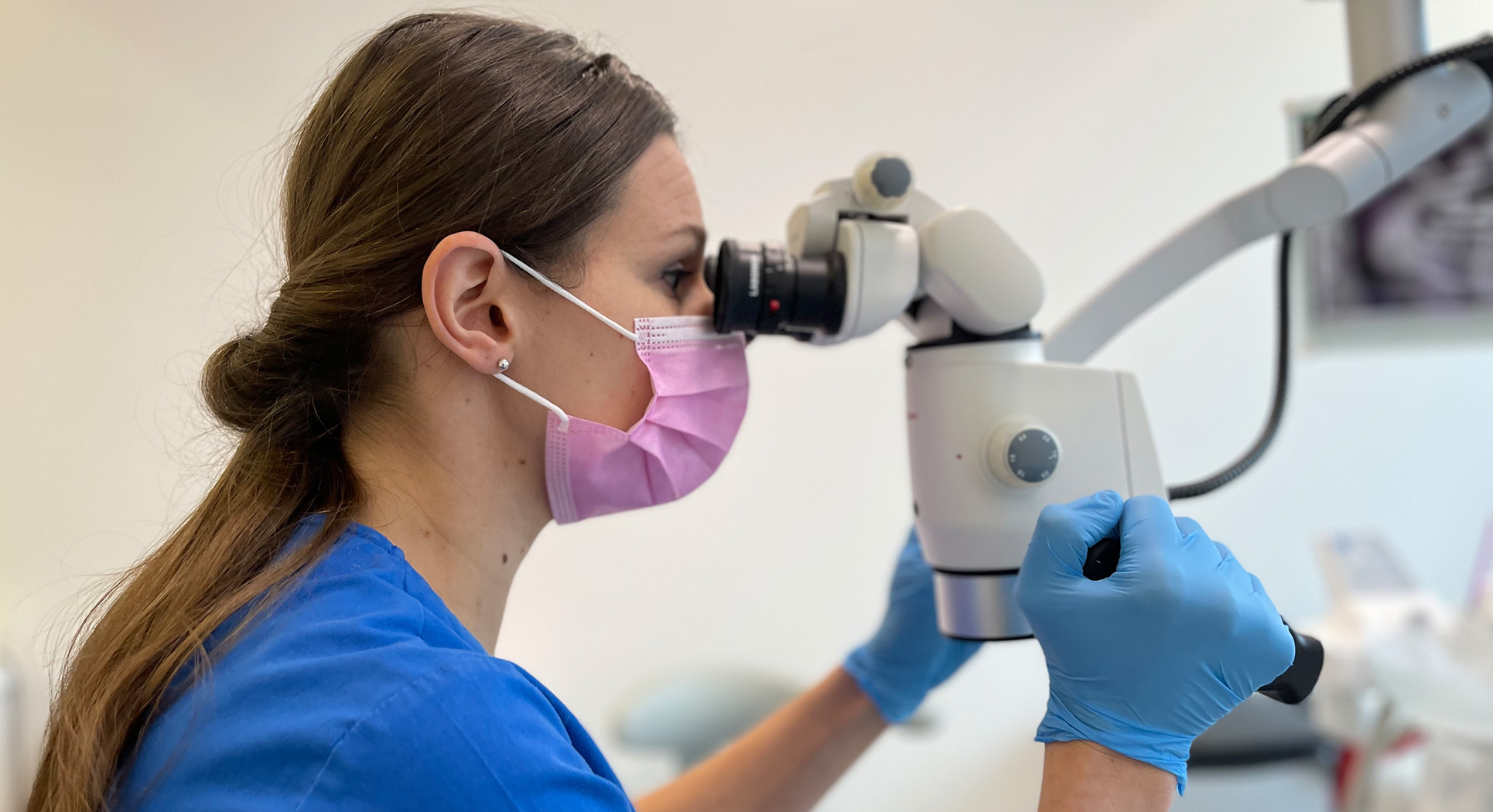Endodontics

Endodontics is a branch of dentistry that deals with the treatment of diseases of the dental pulp.
Pulp (commonly referred to as the nerve) is located in the root canal system of the tooth. The nutritional functions of the pulp are carried out through a developed network of blood vessels, while its rich innervation is responsible for the tooth's responsiveness to stimuli.
The main cause of pulp diseases is bacteria. There are several ways they enter the pulp, causing inflammation. Most commonly, this happens due to tooth decay. However, the pulp can also suffer as a result of trauma, with or without pulp exposure, if the injury is not properly treated in time.
The first symptoms of pulp inflammation may include sudden spontaneous pain, increased sensitivity to cold/heat, discomfort felt during touch or chewing. Sometimes, inflammatory changes occur without symptoms and are chronic, with the disease process indicated by frequent moderate discomfort in the tooth or surrounding tissues, a feeling of pulsation, radiating pain, the presence of a fistula (a small raised area filled with pus that appears on the gum), or a periapical lesion visible on an X-ray during a routine check-up.
The goal of endodontic treatment is to eliminate bacteria from the root canals, mechanically and chemically prepare them, and seal the entire system.
There are also situations where a previously treated tooth requires re-treatment. In such cases, the procedure first involves the removal of the filling material from the tooth canals, followed by disinfection, preparation, and refilling.
If standard endodontic treatment does not produce the expected results, a surgical procedure may be necessary. The use of appropriate instruments and microscopic magnification ensures the procedure is highly precise while preserving the bone and root tissues.
Root canal treatment is also performed in children, both in permanent and deciduous teeth. The method and scope of the treatment and the filling material used should be adjusted to the stage of development of the tooth's root system, its prognosis, and the child's ability to cooperate.
Main Tasks
- Diagnosis
Root canal treatment should be preceded by radiological diagnostics. Before, during, and after the treatment, the doctor performs bitewing X-rays and, in more complex cases, cone beam computed tomography (CBCT).
- Removal of the pulp
After an appropriate access to the pulp chamber is created, the pulp is removed using specialized instruments. The treatment is performed under local anesthesia, with rubber dam isolation (called a saliva barrier), and often with the use of a surgical microscope for magnification.
- Cleaning, disinfection, and filling of the root canals
The canals are cleaned, enlarged, and irrigated with specially selected solutions of appropriate concentration and in a specified sequence. Then, depending on the case, the doctor selects the appropriate material and method for filling the canal.
The length of endodontic treatment depends on many factors. In cases where complete treatment cannot be performed in a single visit, the procedure ends with the placement of a temporary filling.
- Restoration
After completing the root canal treatment, the cavity from the crown side must be tightly sealed to prevent reinfection – recontamination of the root canal system. Teeth that have undergone endodontic treatment are more susceptible to damage and fractures, so the reconstruction often involves the use of posts cemented into the root and indirect restorations that rebuild the crown portion of the tooth, such as inlays and crowns.
